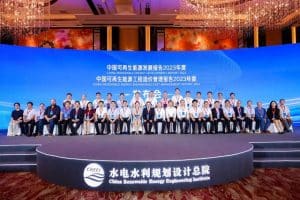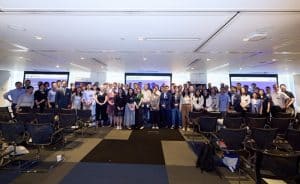China’s public welfare and charity sector is still underdeveloped, and people’s understanding of charity is often limited to donating money. Li Guo, former minister of the National People’s Political Bureau, once said that for modern charities, charitable activities are not limited to raising money; charities also encourage voluntary participation and acts of kindness. China’s public welfare and charities started later than those in Europe and the United States. Before 2015 there was nothing like the United Kingdom’s “Red Nose Day” or the United States’ “Giving Day”, but that all changed when Tencent established “99 Giving Day”.
Each 99 Giving Day, in addition to direct donations to projects by organizations and individuals, the Tencent Foundation, which operates the initiative, matches any donations made, enabling recipients to receive more money.
However, some of the rules for the day were changed this year. For a donation to be matched, certain project quality indicators now need to be met. There were also new features designed to get donors to continue to support their chosen public welfare organization, rather than just on 99 Giving Day. The changes indicate that the initiative has now shifted its focus to the user experience and the most pressing needs of society.
Since 2015, 99 Giving Day has been held for six consecutive sessions, raising more than 9.09 billion yuan ($1.4 billion) and attracting more than 155 million participants. It has become the country’s biggest public welfare event, and serves as a model for internet-based charitable giving. In addition to people who donate, there are also those who take part indirectly through other activities.
The initiative is operated by Tencent Foundation. As an internet giant Tencent has a certain credibility that has allowed it to win public trust. Moreover, 99 Giving Day has broken the tradition of relying on creative appeals to encourage members of the public to donate and has made participants more enthusiastic about donating. Tencent has also allowed the initiative to run on a number of different platforms, both online and offline, attracting widespread attention.
Over the past five years, there has been a significant increase in the number of poverty alleviation projects, the total amount of money donated, and the total number of donors. Poverty alleviation projects that received funds covered multiple areas and operated globally, with projects in Hunan Province receiving more donations than anywhere else last year.
From 2015 to 2020, 99 Giving Day raised a total of 9.09 billion yuan and attracted 155 million donations. Members of the public were the major source of donations, followed by Tencent Foundation and private companies. From 2015 to 2020, public donations made up 57 percent, 50 percent, 64 percent, 59 percent, 72 percent and 76 percent of total donations, respectively.
Education programs attracted the most money from donors, indicating that society as a whole now pays more attention to education. There were 1,382 education aid programs in 2016, accounting for 38 percent of the total number of projects that received donations; in 2017, the amount donated to such projects accounted for more than 30 percent of total donations, the highest among all categories; and education projects also attracted the majority of donations in 2018 and 2019.
Led by the national poverty alleviation policy, the 2015-2019 data shows that public participation in poverty alleviation projects is growing. Approximately 92 percent of total donations between 2015 and 2019 were received by poverty alleviation projects, and more than 95 percent of donations to those projects were made in 2019. The proportion of small donations made also remained high.
In 2019, educational poverty alleviation projects represented the highest share at 43 percent, and received 25 percent of the total money raised. Total public contributions in the area of poverty alleviation in 2015 amounted to 96 million yuan, with 678,900 people donating money. In 2019, 26.18 million people donated a total of 1.7 billion yuan.
Due to the Covid-19 outbreak in 2019, the proportion of donations to poverty alleviation projects increased from 29.1 percent in 2019 to 34.1 percent in 2020, targeting pandemic relief efforts. However, environmental protection projects were the least likely to attract donations from the public so resources were not equally distributed.
Generally speaking, the types of projects that feature on 99 Giving Day overlap with Tencent’s own public welfare projects which cover education, poverty and disaster relief, conservation, healthcare, and public welfare advocacy.
In addition, 99 Giving Day typically helps projects to overcome obstacles which usually have to be faced alone. Without being featured in the event, projects struggle to reach a large audience.
For public welfare projects that wish to participate in the event, Tencent prefers those that appeal to the maximum number of people. At the same time, Tencent relies on financial disclosure, project progress and other thresholds to promote more standardized project operations and to provide users with a better experience.
This article was kindly translated by a CDB volunteer.



